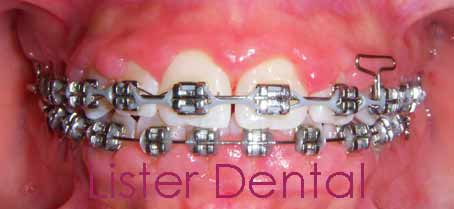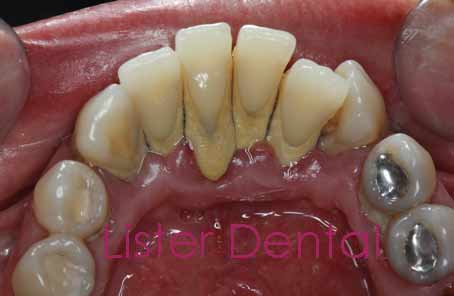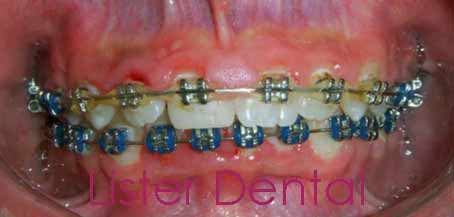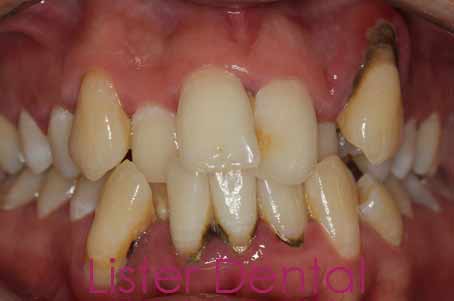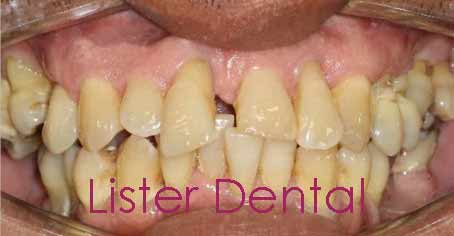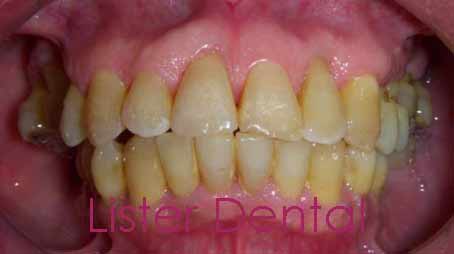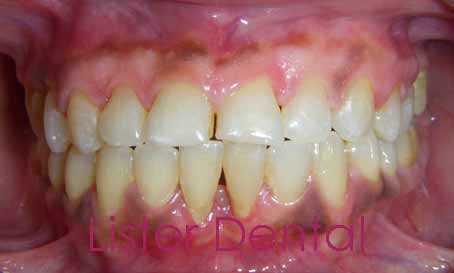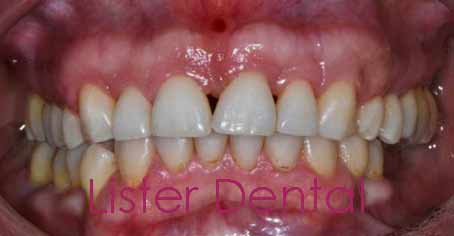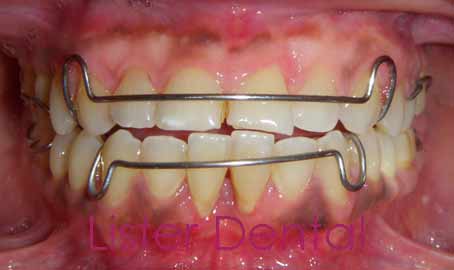Orthodontics
Orthodontic treatment in patients with periodontal problems
What are the signs of an inflamed gum?Signs of gum inflammation according to the American Dental Association (ADA) can include: red, swollen, and/or painful gums, as well as when there is gum bleeding when brushing teeth, or when flossing. Other symptoms include bad breath and gum tissue that does not adhere to the tooth and that may retract, that is, the gingiva moving away from the tooth.
What are the causes of gum disease?Gum disease is commonly caused by the development of biofilm, also known as plaque, which is a sticky film that continually forms on teeth and the gum line. Since plaque contains bacteria, which in turn release harmful toxins when it not removed, will irritate your gums, leading to inflammation. When left untreated, inflamed gums can form periodontal pockets that will continue to retain plaque below the gum line. This complication will end up irritating the tissue even more. If you don't take action against this process, it will continue until it destroys the bone and other tissues that support the teeth.
The main cause of gum inflammation is plaque, but other factors may contribute to this problem or increase the likelihood of its development, according to the American Academy of Periodontics (AAP). Stress, poor nutrition, tobacco use, obesity and being over 65 increase the risk. If you have an illness that affects your body's inflammatory system, or if you clench your teeth together (clamping), you are at risk of developing a more severe case.
How to prevent gum inflammation?The main action you can take to prevent this condition is to prevent the formation of plaque by brushing your teeth well 4 times a day (before and after breakfast, after lunch and after dinner) and flossing every day after lunch and dinner. You can also use an antimicrobial mouthwash (ask your orthodontist). Even if you maintain good oral hygiene, plaque can harden and form a hard deposit called tartar (calculus), which can only be removed with a professional cleaning performed by a dentist. Regular visits to your dentist are important because he can look for signs of inflammation in your gums and give advice on how to keep your mouth healthy. In addition to keeping your teeth clean, it is advisable to avoid tobacco and follow a healthy diet.
Knowing the causes that lead to gum inflammation will help to avoid or even abandon habits that worsen the condition. The good news is that, with the exception of atypical cases, you can prevent gum inflammation by regularly taking care of your oral hygiene at home and seeing your dentist every 6 months.
What is gingivitis?Gingivitis is the first stage of periodontal disease and, according to the US National Institute of Dental and Craniofacial Research (NIDCR), it can be reversed with proper treatment. However, severe gingivitis can progress to periodontitis, which will require much more careful treatment. Children are at the same risk for gingivitis as their parents, but other factors can increase this risk in children.
How to identify the signs of gingivitis?Gingivitis, caused by irritating oral bacteria in plaque, produces symptoms that can be easily ignored if you're not careful. The American Academy of Periodontics (AAP) states that people with gingivitis may not even experience gum pain at this stage, but the gum tissue is usually red and swollen rather than pink and firm. Gum bleeding is another symptom, and even isolated cases of bleeding may suggest that a problem is developing.
Many people have periodontal disease but are unaware that they have this serious infection. Periodontal diseases are gum infections that destroy the bone that supports the teeth. An important indicator of periodontal disease is inflammation, which is the body's way of defending and protecting itself against infection. It is important for individuals to recognize the signs and symptoms of periodontal disease. There are different treatment methods available for periodontal diseases.
What are the causes of periodontal disease?Periodontal diseases are caused by bacterial plaque (biofilm), a sticky film that continually forms around your teeth. The build-up of plaque around the teeth can advance beneath the gum tissue. When bacterial plaque sets in, it hardens over time to form dental calculus, known as tartar. In a healthy mouth, gum tissue and bone adhere well around the teeth; however, when periodontal disease manifests itself, the bone and gums are compromised, forming pockets around the teeth. Over time, these pockets become deeper, which allows bacterial plaque to settle in and grow. Plaque can be removed with daily brushing, flossing, and routine dental cleaning, which can help lower the risk of periodontal disease.
Can a patient with periodontal disease undergo orthodontic treatment?Yes it can, as long as the patient is already undergoing periodontal maintenance, that is, the patient has already undergone periodontal treatment and is under control and must be accompanied by their periodontist. In addition, periapical radiographs of the entire mouth are necessary, as it is an item very important diagnosis. Periodontist visits are still frequent so that the patient receives oral hygiene instructions right after the installation of the orthodontic appliance and other procedures that the periodontist deems necessary.
ACan orthodontic movement aggravate bone loss?No, as long as the entire periodontium including the bone and gums is kept healthy. Bone even in smaller amounts responds in the same way as in disease-free patients. Hence the importance of periodic monitoring by the periodontist. If gingival inflammation occurs during orthodontic movement, then the bone loss process will be aggravated.
So there are no limitations in this treatment modality?here are limitations. Although there are no additional bone losses, the fact that the patient undergoing periodontal maintenance has reduced bone support can cause force overload at the root apex during movement, predisposing the tooth to resorption at the root apex. To reduce these unwanted effects light forces should be used on orthodontic movement and also increase the interval between activation appointments.
At the end of the orthodontic treatment, will another appliance be needed to stabilize the results obtained?Yes, at the end of the orthodontic treatment the removable upper, lower braces and sometimes a fixed wire to the lower inner tooth region. In the case of patients who present generalized bone loss, these retentions should be permanent, that is, for life, and periodic controls at the periodontist should continue indefinitely, as the possibility of recurrence of periodontal disease remains and can be avoided with this care.
|

